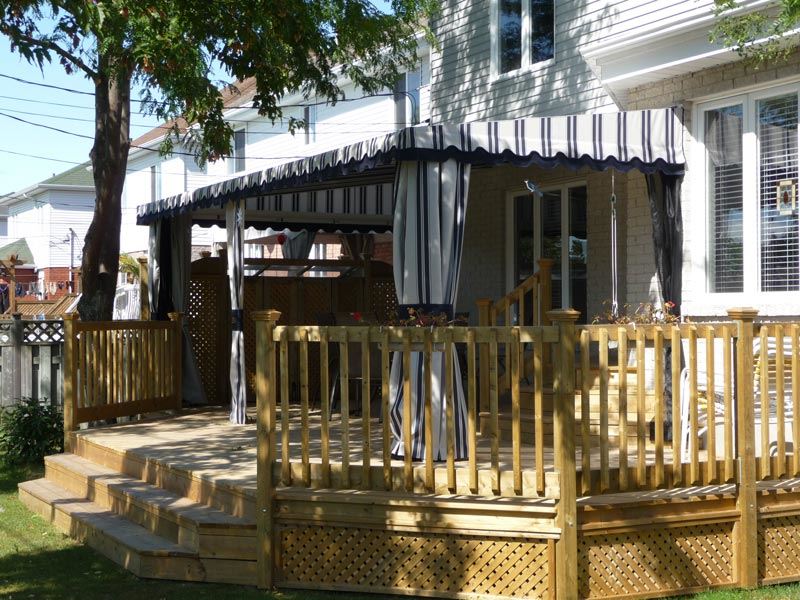Awning Frame Innovation Changes Awning Market
Mike Cornell

Innovation can be viewed as the act of introducing something new into the marketplace. Examples can be found everywhere. The iPod and iTunes changed the way we purchase and listen to music - innovations that are responsible for the CD’s demise. For the awning industry, the staple system allowed companies to by-pass sewing and to fabricate an awning in less time than with conventional methods. Back-lit awning fabrics were seen as a great innovation at the time of their introduction, quickly growing to mainstream status. Of course, we could debate the many innovations that have changed our industry. One innovation, found north of the border in the picturesque province of Quebec, has changed the local awning market. It involves a clever way to fabricate awnings by utilizing mechanical extrusions.
Decades ago, Serge Lapointe, owner of Auvents Signature (auvents means awnings in Quebec French), searched for a way to build frames that was different from the conventional methods of welding or using pipe with fittings. He developed an innovative way to construct awning frames quickly with prefinished aluminum extrusions and a creative form of connectors.
With this new method, awning frames could be shipped to the job site in prefabricated aluminum extruded lengths - welding was no longer needed. The frames could be constructed for four season use, with the strength to withstand snow loads, or as seasonal structures that were put up in the spring and taken down in the fall. The new system did not dampen designs: traditional curved awnings could still be constructed.
Another advantage of the aluminum awning extrusions was that they could be stocked in colors, and special runs of colors were relatively easy, enabling customers to match nearby trim or railings. Best of all, the frames were aesthetically pleasing to the eye when the fabric cover was removed. Other add-ons made the system even more valuable, such as side curtains utilizing a shower curtain design. Some have up to three tracks for fabric, clear vinyl, and bug screen. Electricity could be added easily for lights, heaters, and fans. Wires could be run through the bars with ease, because frames were assembled at the site. Windows and doors could be installed, making the space an awning patio room. In addition, extrusion designs eliminated the need for lacing because the cover could be tightened mechanically.
Once this innovation took hold, other companies jumped on the band wagon, producing their own mechanical systems. Today, mechanical awning systems account for about 50 percent of fixed frames sold per year. Welded frames also account for about 50 percent, while pipe and fitting frames are rarely seen. Attesting to their popularity, mechanical awning systems can be found everywhere: on large commercial projects, residential patios, and individual windows. This true innovation - stemming from the insight of one individual trying to find an easier and better method of producing awnings while improving the overall look of the frame - ultimately changed the Quebec awning market. To view more photos of the system’s products, please go towww.AuventsSignature.com. In addition, please feel free to contact Mike Cornell at MCornell@GlenRaven.com for more information.